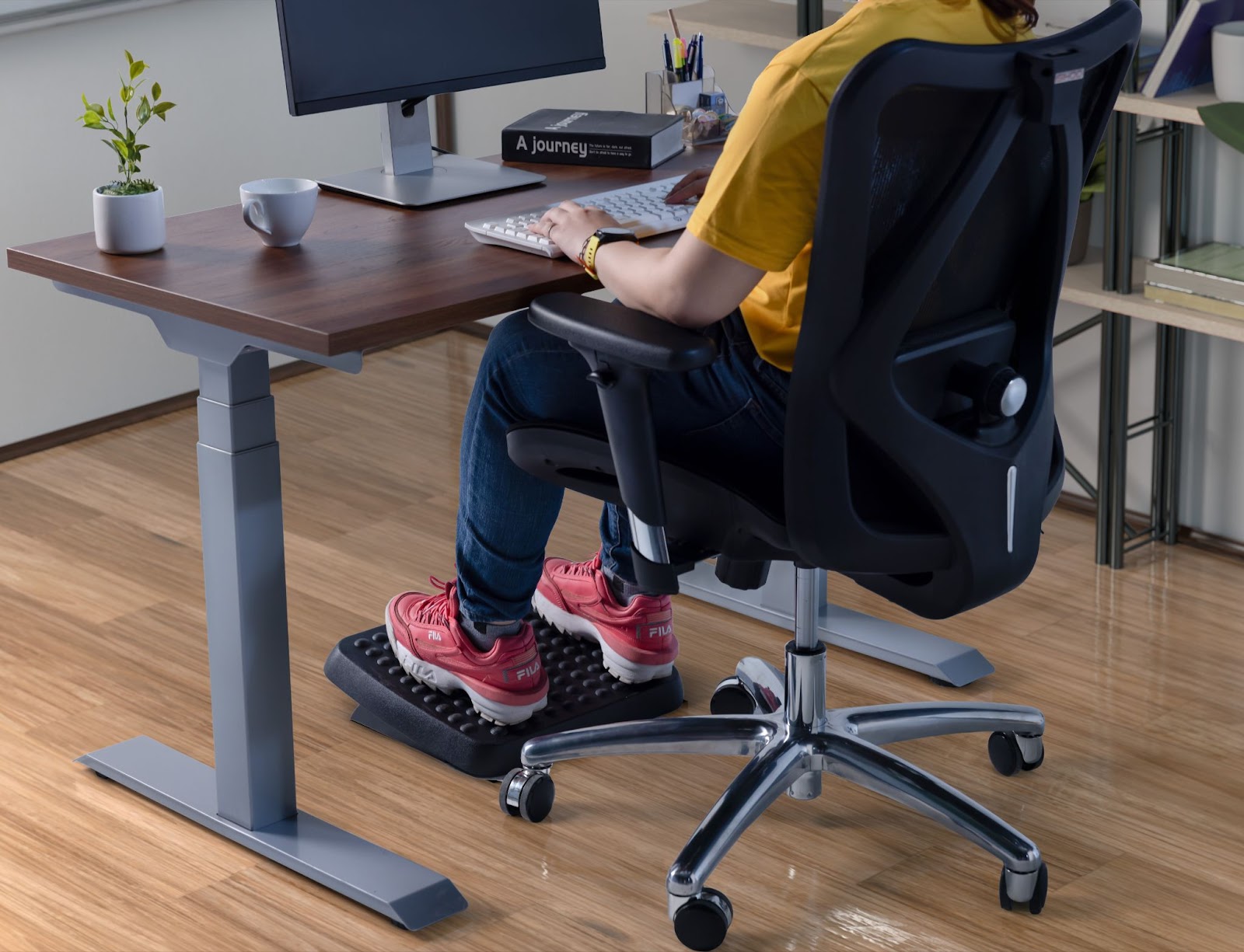Did you know that we type between 1,000 and 2,500 words a day? This doesn’t sound like a particularly dangerous activity, but since we spend a lot of time typing and using our phones, more and more people are experiencing wrist pain. It starts with tingling and numbness in the hand and can become so painful that people stop working or have surgery. Fortunately, it can be prevented with a few minor adjustments. Read our tips to prevent wrist discomfort and pain.
Tips for avoiding wrist discomfort
1) Set up your workstation correctly
When setting up your computer workstation it’s important to have your chair at the right height. Arrange your monitor at eye level and adjust your mouse, and keyboard to a 90-degree elbow height. Try to sit up straight with a nice and balanced posture and make sure you’re sitting comfortably at your desk and not hunching or leaning forward. Position the keyboard and mouse on the edge of the desk to keep your elbows close to your body. Ensure your wrists are not pressing against the hard edge of the desk or table you are using.
2) Pay attention to the position of your hands
Keeping the hands in a neutral position is important, this prevents you from twisting or bending your wrists. The wrong posture can reduce blood circulation in the hands which can lead to pain, fatigue, and numbness. When the wrist is bent outward in the direction of your pinky, try to keep your elbows close to your body. If your wrists are leaning on the table, adjust your chair a couple of centimeters or inches higher so you are at the same height as your keyboard. If you are feeling any strain when typing you may need to consider an alternative keyboard, possibly an ergonomic slipt keyboard. Tip: when you need to type more today, it is recommended that you remove jewelry such as bracelets or rings.
3) Your technique while typing
Try to type with 10 fingers, this helps you to use all your hand and fingers muscles. When typing, keep your hands and fingers relaxed. Type lightly, it is more efficient and will prevent your fingers from getting tired and you make fewer mistakes. Don’t bang on the keyboard and look for a keyboard that you think is comfortable. There are many different keyboards available where the keys need to be pressed harder or just lighter. Consider using keyboard shortcuts to repeat common tasks.
4) Try to stretch your muscles before and after typing
It is not good for our bodies to stay in any one position for too long; standing, sitting, or typing. There are simple stretches you can do at your desk. This will help reduce stiffness while boosting your energy and alertness. Try to incorporate some stretches in at regular intervals throughout the day even if it’s just for a minute. Our bodies are not designed to be in one position for long periods of time and when we do our muscles get tired.
Forearm and wrist stretch:
- Place your right arm out in front of you with your elbow straight and palm facing down.
- Move your wrist to make a ‘stop’ sign with your hand.
- Use your left hand to put some pressure on.
- Hold for 30 seconds or more.
- Turn your forearm over so that your palm is facing up, now move your wrist so the palm faces you.
- Use your left hand to put on some pressure. Hold for 30 seconds or more.
- Repeat both with the left side.
How can Fit for Work help?
To learn more about setting up or managing an ergonomics program that supports staff working from home or in the office or support with staying legally compliant, you can reach out to Fit for Work. For more information on our Ergonomics Self-Assessment and Education Tool, contact us.




